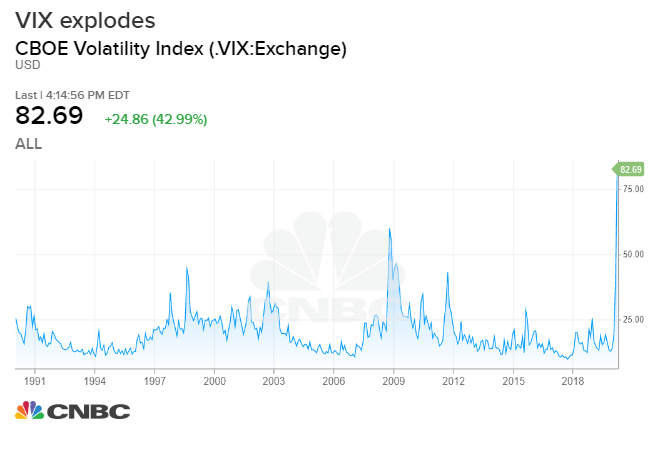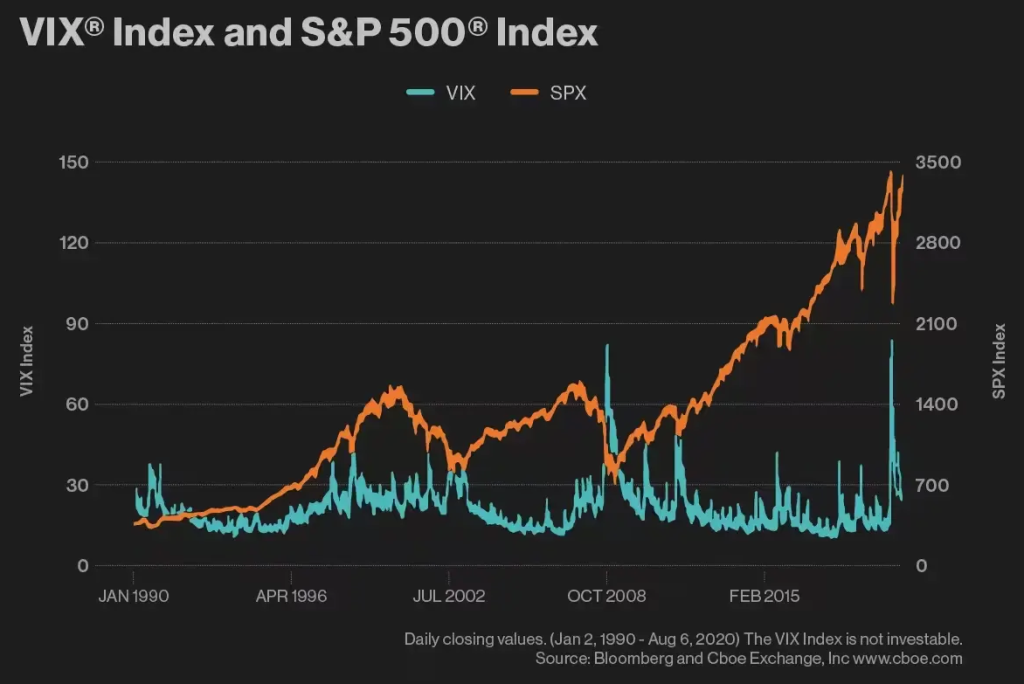
When markets appear calm on the surface, tension often builds underneath, and the VIX is usually the first to signal it. This week, the so-called “Fear Index” jumped 6% from near its yearly lows, even as the headlines remained quiet.
For traders who know how to read it, the VIX can act as an early warning – a chance to prepare before the storm hits.
The Cboe Volatility Index (VIX) doesn’t predict market direction, it measures expected volatility. Often called the “Fear Index,” it reflects how nervous or confident traders are about the next 30 days.
Whether you trade stocks, forex, or indices, understanding what the VIX is signalling can help you anticipate shifts, manage risk, and stay one step ahead.
How the VIX works
The VIX, created by the Chicago Board Options Exchange (Cboe) in 1993, measures implied volatility – that is, how much market participants expect the S&P 500 to move over the next 30 days.
It is calculated from the prices of near-term S&P 500 options. When traders anticipate turbulence, they pay more for options, which drives up implied volatility and, in turn, the VIX.
Unlike actual price movements, the VIX reflects expectations, not reality. Think of it as a sentiment gauge: high VIX readings mean investors expect bigger price swings, while low readings suggest confidence and calm.
For example, a VIX level of 20 implies that traders expect the S&P 500 to move roughly 5.77% over the next month (since volatility is annualised, you divide by the square root of 12).
What a rising or falling VIX means
The VIX rises when uncertainty, fear, or negative sentiment dominate the market. It often spikes during financial crises, geopolitical shocks, or unexpected data releases.
Historically, levels above 30 have been associated with panic; levels below 15 usually point to complacency.

In March 2020, at the height of the COVID-19 panic, the VIX shot above 80 – a historic high.
More recently, the VIX jumped 6% in a single day amid quiet news flow, hinting at anxiety ahead of earnings and key economic data. Such moves can foreshadow volatility before it becomes visible in price action.
Conversely, when the VIX falls, it often indicates stabilising conditions and investor confidence. But a very low VIX may also suggest traders are underestimating risk.
How to use the VIX in trading
The VIX is not just a background number – it can be a powerful addition to your strategy. Here are some practical ways to use it:
Gauge market sentiment: Rising VIX = rising fear. This can signal caution is warranted, especially around major events (e.g. Fed meetings, inflation data).
Timing entries and exits: A falling VIX during a market rally may confirm bullish momentum. A sudden spike could suggest a pullback is near.
Manage risk: Use the VIX as a barometer to adjust your position sizes. In high-VIX environments, markets can move quickly – tighter stops and smaller trades can protect capital.
Cross-asset awareness: Though based on S&P 500 options, the VIX influences global markets. Forex, commodities, and indices often respond to shifts in US volatility.
While there are products that track VIX movements (such as VIX futures and ETFs like VXX or UVXY), these are highly complex and time-sensitive. They are not suitable for beginners. Instead, most traders will benefit from treating the VIX as a signal, not a trading instrument.
VIX and market correlation: Why it moves opposite to equities
The VIX tends to rise when equities fall. Why? Because traders rush to buy protective options when prices drop, which inflates implied volatility.

Think of the VIX as a financial seismograph. When the market gets shaky, the VIX starts registering those tremors before the cracks appear.
It’s a mirror of investor behaviour: panic and protection-seeking push it up; calm and confidence pull it down.
That inverse relationship makes the VIX a useful contrarian indicator. Sharp VIX spikes during sell-offs may suggest fear is peaking, often before a reversal.
Practical tips for traders using VIX
The VIX can be a reliable compass – but only if you know how to use it wisely. Here are some habits and tactics to help you get the most out of it:
- Don’t trade based on VIX alone. It works best as a supporting tool. Combine it with chart patterns, technical indicators, and macroeconomic context. For instance, if the VIX is rising alongside a key resistance level on a major index, it might signal a weakening uptrend.
- Watch it during key events. The VIX often moves before major data drops, earnings seasons, or central bank decisions. An unexplained rise in the VIX before a known event could mean traders expect surprises.
- Stay disciplined. High-VIX environments tempt overreaction. Traders may abandon strategy out of fear or greed. Instead, focus on your plan, reduce position size if needed, and avoid revenge trading.
- Use it in daily prep. Just like checking the economic calendar or overnight news, add the VIX to your daily dashboard. Changes in the VIX can colour your risk approach for the day ahead.
Understanding the VIX gives you a window into the psychology of the market – and that edge is priceless.
Conclusion
VIX offers insight into how the market “feels” before the headlines catch up. It doesn’t replace your strategy, but it enhances it. For traders who want to navigate volatility with confidence, learning to read the Fear Index is a must.
If you are ready to put your trading knowledge into action, open a live account with VT Markets today and gain access to advanced tools, real-time insights, and tight spreads – everything you need to stay ahead in volatile conditions.





